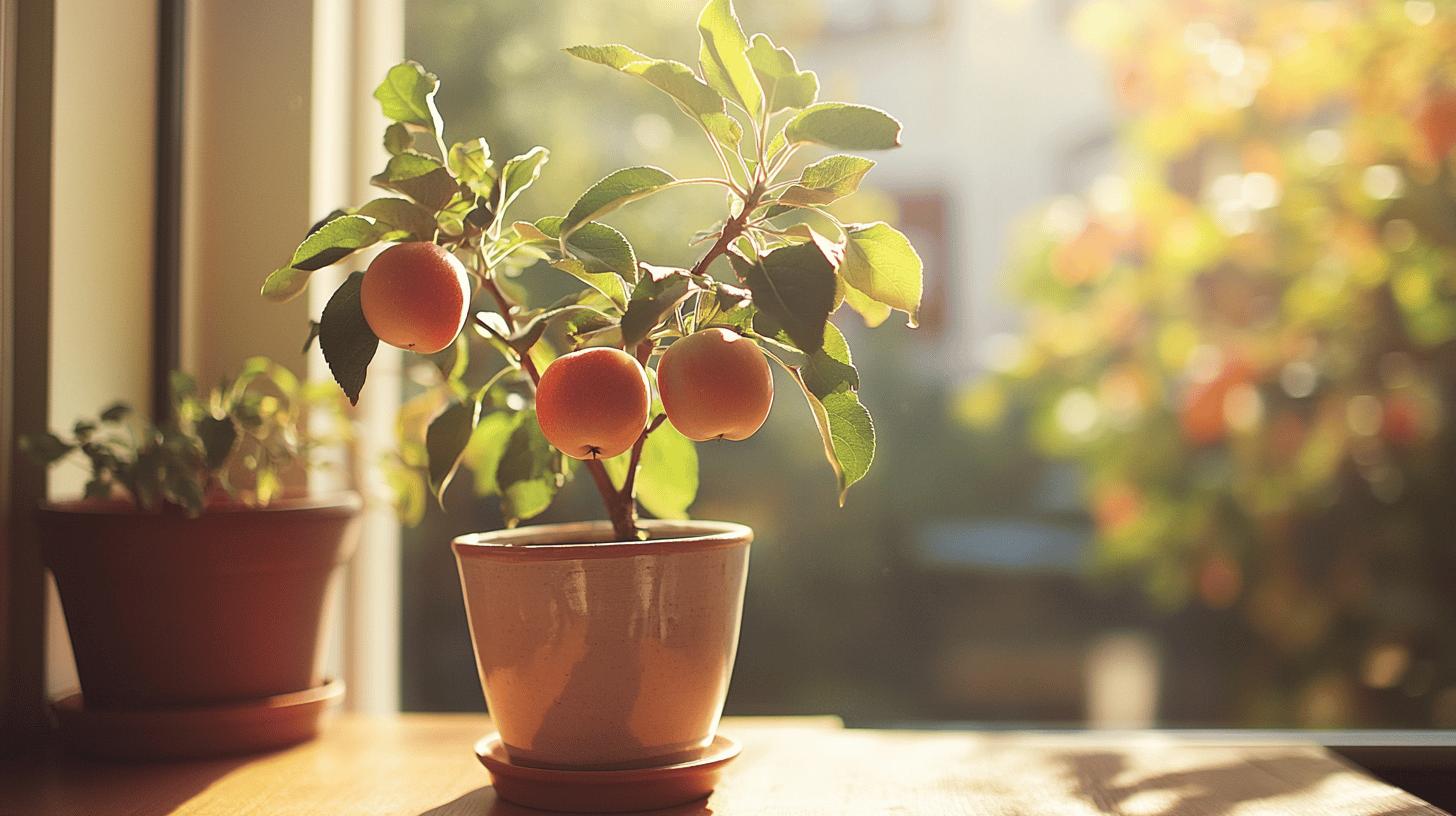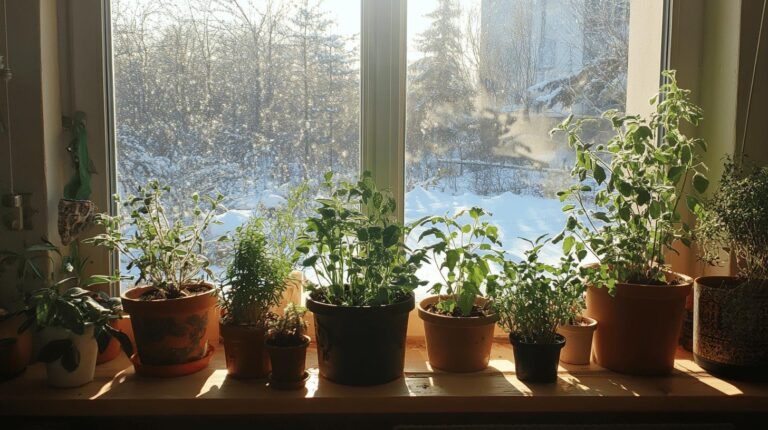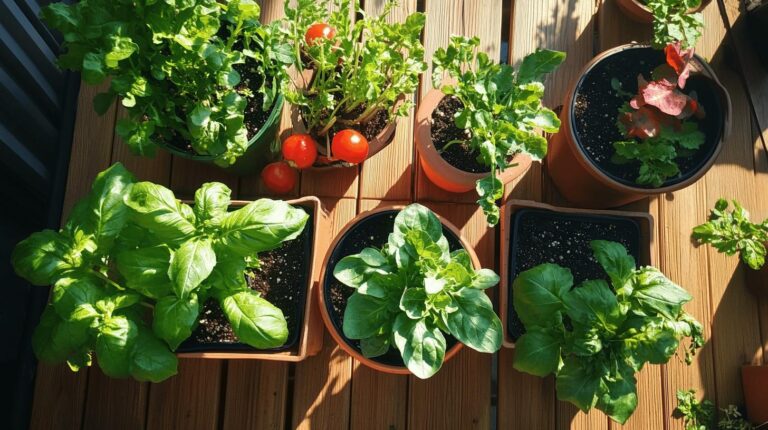Choosing Fruit Trees for Container Gardens: Tips for Optimal Growth
Did you know that you can grow your own fruit trees, even if you don’t have a sprawling backyard? Container gardening opens up a world of possibilities, allowing city dwellers and those with limited space to savor the sweet rewards of homegrown produce. Whether you’re yearning for the fragrant Meyer lemons or the adorable 'Little Miss Figgy' fig, container-friendly fruit trees offer an easy way to enjoy fresh flavors nearly year-round. Join me as we explore the best fruit trees for container gardening success, and discover how easy it is to bring a touch of nature and nutrition to your home.
Top Fruit Trees for Container Gardening
Growing fruit trees in containers opens up a world of possibilities for those with limited space or less-than-ideal climates. Dwarf and compact varieties are particularly suited for container gardening because they remain small and manageable, making them ideal for patios and small gardens. These varieties are bred not only for their size but also for their ability to produce fruit in confined spaces. Their decorative appeal, with lush foliage and vibrant fruits, adds a splash of color to any outdoor setting. Whether you have a sunny balcony or a cozy porch, these trees transform any space into a productive and beautiful oasis.
What makes these fruit trees stand out is their adaptability and resilience in pots. Many of these varieties, like the 'Little Miss Figgy' fig and Meyer lemons, are popular for their fragrance and fruit quality. They’re chosen because they thrive in pots, providing fresh produce right at your doorstep. The key is selecting varieties that are known for their container-friendly nature, ensuring that you can enjoy homegrown fruits without needing a large garden plot. Their compact size doesn’t hinder their ability to produce delicious fruits, making them a perfect choice for urban gardeners and those looking to maximize their space.
- Meyer lemons
- 'Little Miss Figgy' Fig
- Dwarf peach trees
- 'Sugar Baby Bush' Watermelon
- Pomegranates
- Raspberry Shortcake® Raspberries
- Baby Cakes™ Blackberries
- Pink Icing™ Blueberries
Essential Care Tips for Container Fruit Trees

When you're nurturing fruit trees in containers, consistent watering becomes crucial. Unlike their in-ground counterparts, container fruit trees can dry out quicker and may demand daily watering, especially during scorching summer days. It's not just about keeping the soil moist; adequate drainage is equally vital to avoid waterlogging, which can lead to root rot. Therefore, choosing a container with proper drainage holes is essential. This balance of moisture ensures your trees remain healthy and productive.
Pruning is another key care practice for container fruit trees, helping to maintain their size and health. By pruning during the dormant season, you can shape the tree, remove dead or diseased wood, and encourage new growth. This practice not only keeps the tree manageable in size but also stimulates fruit production and improves air circulation within the foliage. Proper pruning can significantly enhance the overall vigor and productivity of your container-grown fruit trees.
The size of the container itself plays a pivotal role in the successful development of your fruit trees. Larger containers provide ample space for root expansion, which is crucial for supporting robust growth and fruit production. Containers that are too small can restrict root development, leading to stunted trees and reduced yields. Thus, investing in a larger pot, especially for larger fruit crops, can make a noticeable difference in the health and productivity of your trees.
- Ensure proper drainage to prevent root rot.
- Water daily in hot weather.
- Prune during the dormant season.
- Use larger containers for bigger fruit crops.
- Monitor for pests regularly.
Choosing the Right Container for Your Fruit Trees
Selecting the right container for your fruit trees is more than just a matter of aesthetics—it's about providing the roots with enough space to thrive. Container size is crucial for the healthy development of your plants. Larger pots, like wooden barrels, are especially beneficial for bigger fruit crops, allowing roots to spread and grow robustly. This, in turn, supports healthier foliage and more abundant fruit production. It's essential to ensure that your containers have adequate drainage holes to prevent waterlogging, which can lead to root rot and other issues. Good drainage helps maintain the right balance of moisture, necessary for your tree's health.
When it comes to materials, choosing the right type can impact the growth and maintenance of your fruit trees. Wooden barrels are not only sturdy but also provide good insulation for the roots. Ceramic pots, while heavier, offer a decorative appeal and help regulate temperature fluctuations. Plastic containers are lightweight and easy to move, making them ideal for those who might need to reposition their plants to catch the sun. Fabric grow bags are excellent for aerating the roots and preventing them from circling, which can improve overall root health. Each material has its advantages, so consider your specific needs and environment when making a selection.
- Wooden barrels
- Ceramic pots
- Plastic containers
- Fabric grow bags
Maximizing Sun Exposure for Container Fruit Trees
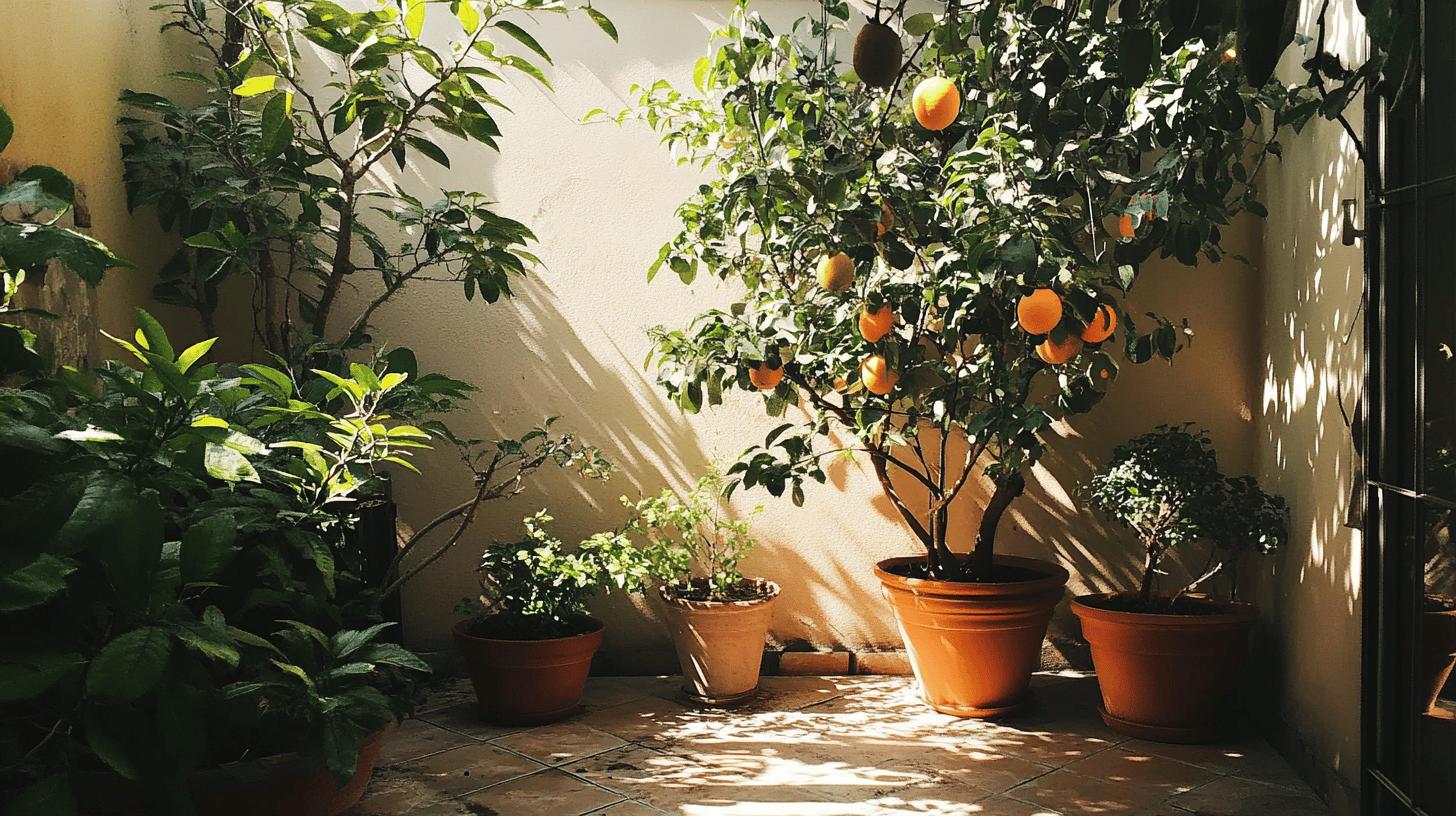
Proper sun exposure is crucial for the healthy growth and productivity of fruit trees in containers. Most fruit trees thrive best with full sun, which means they require about six to eight hours of bright light each day. Adequate sunlight aids in photosynthesis, enhancing fruit production and ensuring a bountiful harvest. Without sufficient light, trees may become leggy, produce fewer fruits, and show signs of stress. Therefore, positioning your fruit trees where they can soak up the maximum amount of natural light is a vital step in container gardening success.
In small spaces, optimizing sunlight can be a bit challenging but not impossible. One effective strategy is to place containers in south-facing locations, where they will receive the most direct sunlight throughout the day. If space is limited, rotating your pots weekly can help ensure all sides of the tree receive equal light exposure, promoting balanced growth. Additionally, using reflective surfaces, such as mirrors or light-colored walls, can help redirect and boost the available sunlight, making your container garden a sunlit haven for thriving fruit trees.
- Position containers in south-facing locations.
- Rotate pots weekly for even light distribution.
- Use reflective surfaces to increase light availability.
Soil and Nutrient Requirements for Fruit Trees in Pots
When growing fruit trees in containers, the soil mix is a vital component that forms the foundation for healthy growth. An ideal soil mix should be well-draining yet capable of retaining enough moisture for the roots. This balance ensures that the roots are neither waterlogged nor too dry. A good starting point is a combination of high-quality potting soil, perlite, and peat moss, which provides both aeration and nutrient retention. Specific fruit trees, like blueberries, have particular soil needs. They thrive in acidic conditions, so incorporating an acidic soil mix or pine bark fines can help create the right environment for them.
Nutrients play a crucial role in the vigorous growth and fruit production of container-grown trees. Since nutrients in pots can deplete faster than those in the ground, supplementing with fertilizers is essential. Providing a steady supply of nutrients supports flowering and fruiting processes. Organic compost is a great way to enrich the soil naturally, while a slow-release fertilizer can provide consistent nourishment over time. Liquid seaweed extract is another excellent supplement that promotes root health and enhances plant resilience. By ensuring your fruit trees receive the right mix of soil and nutrients, you'll set the stage for a bountiful and successful container garden.
- Acidic soil mix for blueberries
- Organic compost
- Slow-release fertilizer
- Liquid seaweed extract
Common Challenges and Solutions in Container Fruit Gardening
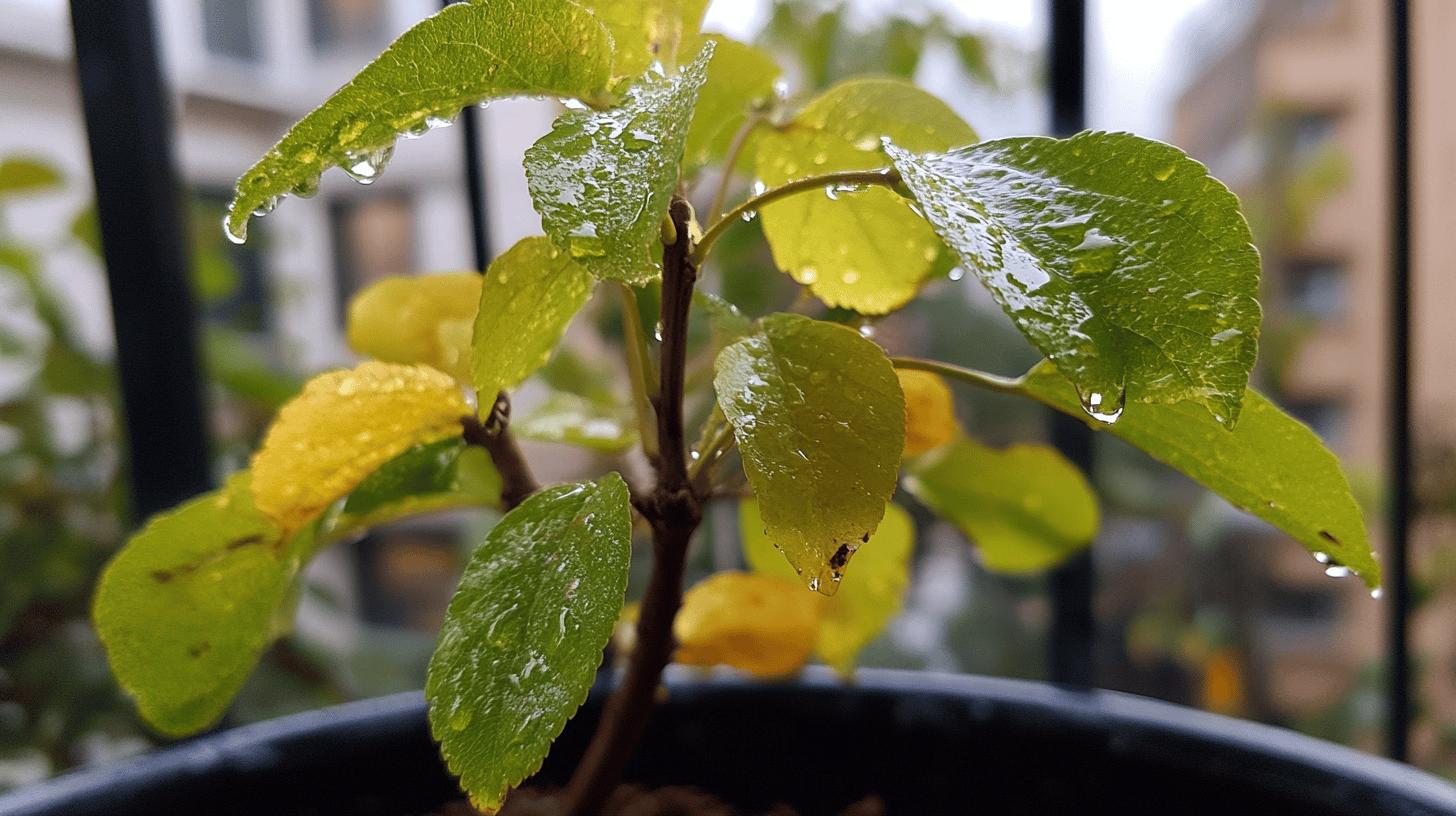
One of the most frequent challenges in container fruit gardening is managing drainage. Proper drainage is vital for preventing waterlogging and root rot, which can severely affect your fruit tree's health. Without adequate drainage, excess water can suffocate the roots, leading to poor growth or even death. To combat this, ensure your containers have sufficient drainage holes and use a well-draining soil mix. Elevating pots slightly off the ground can also help excess water escape, keeping the roots healthy and well-aerated.
Pest control is another critical aspect of maintaining healthy container fruit trees. Containers can sometimes create a micro-environment that attracts pests like aphids, spider mites, and scale insects. Using organic pest solutions, such as neem oil or insecticidal soap, can effectively manage these pests without harming the plant or the environment. Regular inspection of your trees allows for early detection and treatment, which is crucial to preventing infestations from spreading.
Novice gardeners often make mistakes that can hinder the growth of their container fruit trees. One common mistake is overcrowding, which limits airflow and light penetration, encouraging disease and stunted growth. Ensure there's adequate space between containers to promote healthy growth. Another pitfall is insufficient sunlight. Position your containers where they receive the necessary six to eight hours of sunlight daily. By addressing these challenges with practical solutions, you can cultivate a thriving container fruit garden that yields delicious results.
- Waterlogging: Ensure proper drainage.
- Pest infestations: Use organic pest solutions.
- Poor soil quality: Use nutrient-rich soil mixes.
- Overcrowding: Space containers adequately.
- Insufficient sunlight: Optimize placement for full sun.
Harvesting and Enjoying Fruit from Your Container Garden
When it comes to harvesting fruit from your container garden, timing is everything. Most container-grown fruit trees will yield fewer fruits than their full-sized counterparts, but the quality and freshness of the produce make up for the smaller quantity. It's important to monitor the ripening process closely, as fruits can mature quickly. Picking them at their peak ensures maximum flavor and nutritional value. For instance, berries should be harvested when they’re plump and deeply colored, while citrus fruits are best picked when they have a slight give when gently squeezed.
The joy of having fresh, homegrown produce at your fingertips is unmatched. Not only are you rewarded with fruits that are bursting with flavor, but you also have the peace of mind knowing exactly how they were grown. Fresh fruits from your container garden can be enjoyed straight from the tree or incorporated into delicious recipes. To savor the bounty throughout the year, preserving methods can extend the shelf life of your harvest. Whether you're making jams or simply storing for later use, these preservation techniques ensure you enjoy the fruits of your labor long after the growing season has ended.
- Canning
- Freezing
- Drying
Final Words
After exploring the best fruit trees for container gardening, it's clear that choosing the right varieties can transform your space. Compact trees like Meyer lemons and 'Little Miss Figgy' figs thrive beautifully in pots, offering both decorative charm and flavorful rewards.
By understanding the essentials of care, suitable containers, and sunlight positioning, you can nurture a fruitful container garden with ease. Remember the joy of harvesting and savoring your homegrown produce.
Embrace this fulfilling journey with container fruit trees and enjoy the delight of having fresh fruit at your fingertips.
FAQ
What fruit tree grows well in pots?
Growing fruit trees in pots can be incredibly rewarding. For container gardening, choose varieties such as Meyer lemons, 'Little Miss Figgy' figs, dwarf peach trees, and pomegranates, as these thrive well and are visually appealing.
What is the lowest maintenance fruit tree?
Fig trees are considered low maintenance. 'Little Miss Figgy', a dwarf variety, fits perfectly in containers and requires minimal care, offering delicious fruits with little fuss.
What is the easiest tree to grow in a container?
Dwarf peach trees are among the easiest to grow in containers. Their compact nature and adaptability make them ideal for limited spaces, providing beautiful blooms and juicy peaches.
Can you grow fruit trees in 5-gallon buckets?
Yes, growing fruit trees in 5-gallon buckets is possible. Choose dwarf varieties and ensure proper drainage, and frequent watering. They offer an accessible solution for those with space restrictions.
What are the best fruit trees for container gardening in California?
In California, popular choices for container gardening include Meyer lemons, 'Little Miss Figgy' figs, and dwarf peach trees. These varieties thrive in California's climate, making them ideal for containers.
Where can I find container fruit trees for sale?
Container fruit trees are widely available at local nurseries and online retailers. Look for specialized garden centers that offer a variety of dwarf and compact fruit trees suitable for container growth.
What are patio fruit trees?
Patio fruit trees are small, dwarf-sized fruit trees tailored for container growth on patios or balconies. They include varieties like Meyer lemons and Baby Cakes™ blackberries, providing full fruiting capability in a smaller form.
Why choose dwarf fruit trees for containers?
Dwarf fruit trees suit containers due to their compact size, which makes fitting in limited spaces easier. They offer full fruit yields without requiring extensive maintenance, perfect for patios or small gardens.
